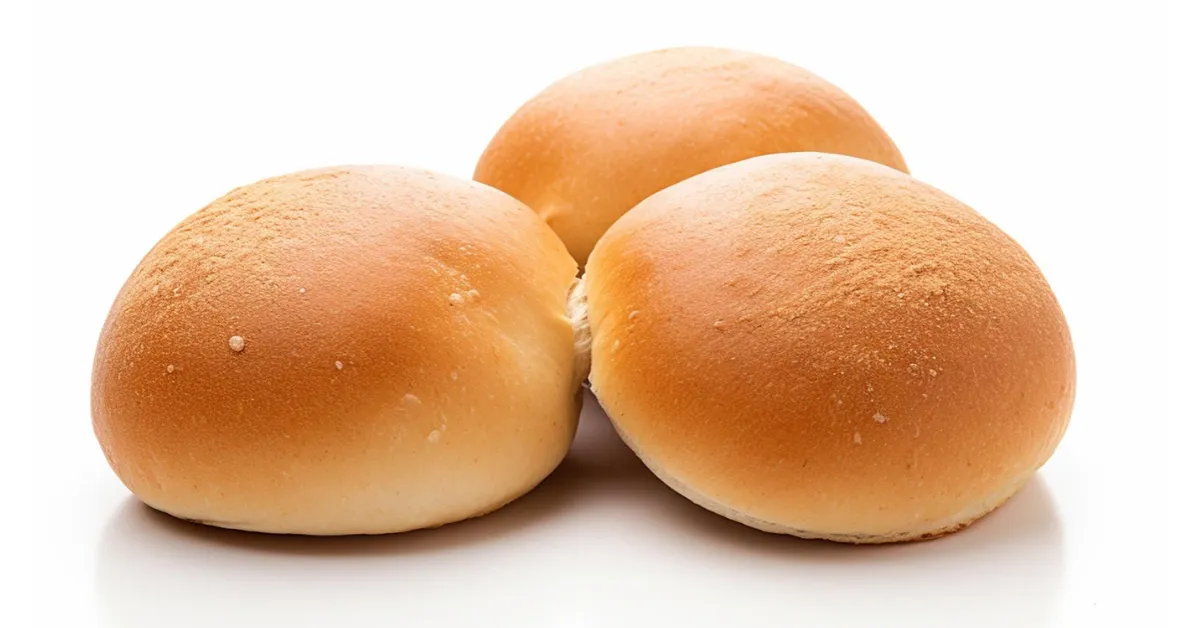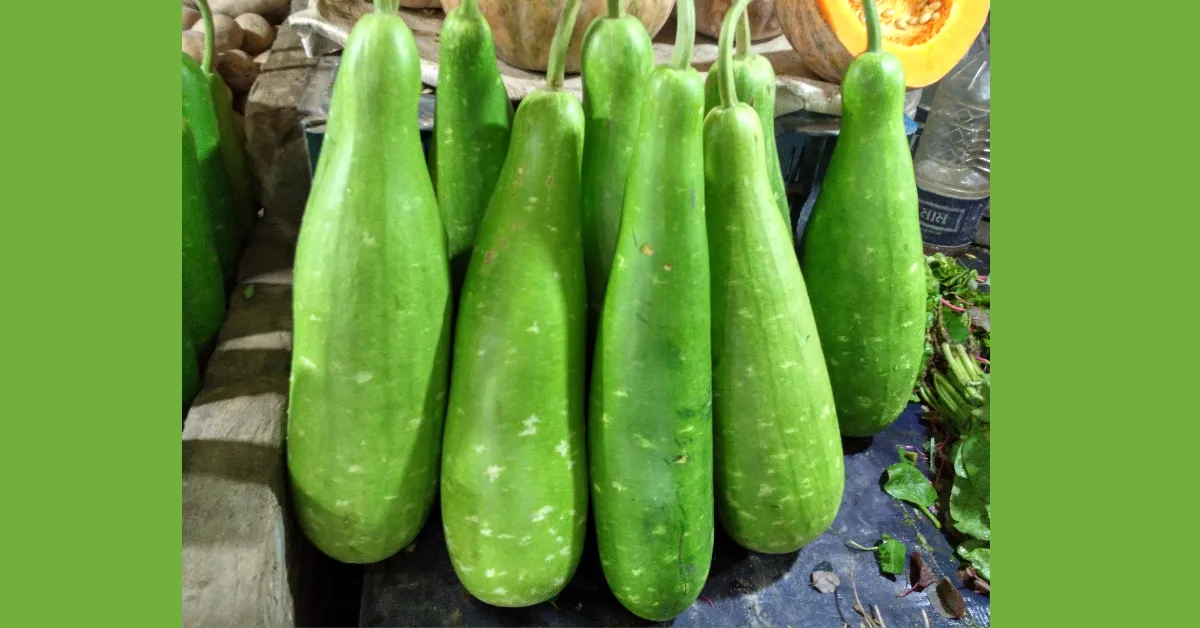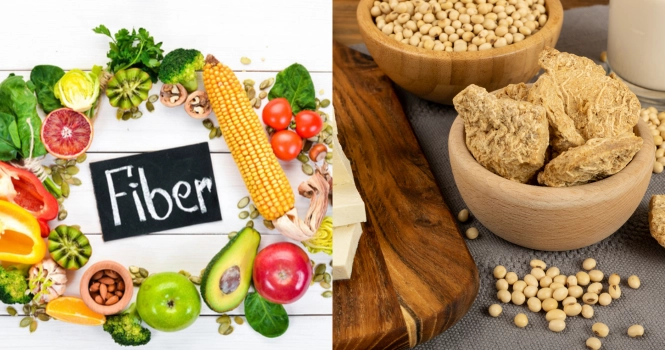Horse Gram Benefits: Discovering the Power of This Nutrient-Rich Superfood

What is Horse Gram?
Horse gram is a lesser known type of Legume, originating from India and south east asia, with an impressive nutritional profile. Packed with essential nutrients, horse gram is increasingly gaining recognition for its health benefits.
The commonly used name are,
- Scientific Name: Macrotyloma uniflorum
- Hindi: Kulthi (कुल्थी), Kulthi Dal
- Kannada: Hurule (ಹುರಲೆ) or ಹುಲುಗ್ರಾಮ್” (hulugrām)
- Spanish: Gramo caballo or Lenteja de caballo
- Arabic: “العدس الحصان” (pronounced ad-das al-hisan)
The term “Horse” was used historically as it was commonly used to feed horses for energy and also was grown easily and made a cheaper rich nutritional option, more so in areas where there were horses and cattles.
Their appearance is dark brown or reddish-brown beans that are larger and more rounded compared to green gram.
Native Region: India, particularly cultivated in South Indian states such as Karnataka, Andhra Pradesh, Tamil Nadu, and Maharashtra.
Cultivation: Grown as food, forage, and green manure in India, as well as in Eastern and Southern Africa, Myanmar, Malaysia, the West Indies, and Australia.
It is highly resilient to drought and thrives best in moderately warm, dry climates. These conditions are ideal for its optimal growth.
Nutritional Value per 100g
- Protein: 17.9–25.3%
- Carbohydrates: 51.9–60.9%
- Lipids: Low (0.58–2.06%)
- Essential Amino Acids: Present
- Iron, Phosphorus, Vitamins: Includes carotene, thiamine, riboflavin, niacin, and vitamin C
Key Health Benefits of Horse Gram
Horse gram is gaining attention for its rich nutrient profile and numerous health benefits. Packed with protein, fiber, vitamins, and antioxidants, it has been a staple in traditional Ayurvedic medicine for centuries.
Let’s dive into the key health benefits of horse gram and why it’s a great addition to any diet.
Benefits for Women
- Supports Weight Loss:
Horse gram is an excellent option for women aiming to lose weight. It is low in calories and high in dietary fiber, which promotes a feeling of fullness and reduces overeating. The fiber content also helps regulate blood sugar levels, making it beneficial for women with diabetes or insulin resistance.
- Regulates Menstrual Cycle:
It has been traditionally used to help balance hormones and regulate the menstrual cycle. Its iron-rich composition can combat anemia, a common issue among women during their reproductive years, thereby promoting better overall energy levels and well-being.
- Boosts Skin Health:
Horse gram’s antioxidant properties help combat free radicals, which can cause premature aging and skin damage. Regular consumption or even topical application (in powdered form) can help improve skin texture, reduce blemishes, and provide a natural glow.
- Prevents UTIs:
Women are more susceptible to urinary tract infections (UTIs), and horse gram’s diuretic properties help in detoxifying the body and flushing out harmful bacteria from the urinary system. This makes it a great natural remedy to prevent UTIs.
- Improves Digestive Health:
The high fiber content of horse gram aids digestion and promotes gut health, helping to prevent constipation and improve bowel regularity.
Benefits for Men
- Boosts Energy and Stamina: For men leading active or physically demanding lives, horse gram can be an excellent source of energy.
It is rich in protein and essential minerals, making it ideal for maintaining stamina and supporting muscle repair after workouts or strenuous activities.
- Promotes Heart Health: Horse gram is known to lower cholesterol levels, making it beneficial for heart health.
It helps reduce bad cholesterol (LDL) while improving good cholesterol (HDL) levels, thereby reducing the risk of heart disease, which is particularly important for men as they age.
- Manages Diabetes:
Horse gram’s low glycemic index and high fiber content help regulate blood sugar levels. For men with diabetes or at risk of developing it, including horse gram in the diet can help maintain stable blood glucose levels.
- Improves Kidney Function:
It has been traditionally used to treat kidney stones and other urinary-related issues. It works as a natural diuretic, promoting the expulsion of excess salts and toxins, which can be especially beneficial for men with kidney concerns.
- Enhances Digestive Health:
Just like for women, the fiber-rich content of horse gram promotes healthy digestion in men, helping to prevent gastrointestinal issues like constipation and indigestion.
Incorporating horse gram into your diet is easy and highly beneficial, regardless of gender.
Benefits of Drinking Horse Gram Water
1. Better Blood Sugar Control
- Helps regulate blood sugar levels due to its natural bioactive compounds.
2. Supports Immune Health
- Contains antioxidants that can aid in preventing and alleviating common colds and throat infections.
3. Relieves Fever
- May help in reducing fever and related symptoms.
4. Prevents Urinary Stones
- The bioactive compounds may assist in reducing the risk of urinary stones.
5. Helps with Respiratory Issues
- Can provide relief from asthma and bronchitis.
6. Aids in Weight Management
- Supports weight control and management due to its high fiber content.
7. Reduces Risk of Stroke and Heart Diseases
- Contributes to cardiovascular health, potentially lowering the risk of stroke and heart diseases.
Potential Side Effects
While horse gram offers a range of impressive health benefits, it’s important to be aware that it may also come with certain side effects and contraindications. These side effects are generally mild, but understanding them can help you mitigate potential risks and enjoy its benefits safely.
Common Side Effects and Contraindications
- High Uric Acid Levels: Horse gram is rich in proteins and purines, which can increase uric acid levels in the body. This is particularly concerning for individuals prone to gout or those with a history of kidney stones, as excess uric acid can worsen these conditions.
- Excess Heat in the Body: In traditional Ayurvedic medicine, horse gram is considered a “heating” food, which can increase body heat. Consuming large amounts of it, especially during hot weather or for individuals with conditions that cause overheating, can result in discomfort, such as hot flashes, excessive sweating, or irritability.
- Digestive Issues: Since horse gram is rich in dietary fiber, excessive consumption may lead to gastrointestinal issues like bloating, gas, or indigestion in some individuals. Those not used to high-fiber foods may experience discomfort if they suddenly incorporate a lot of horse gram into their diet.
- Pregnancy Concerns: While horse gram has many benefits, pregnant women are often advised to avoid it or limit its intake. It may stimulate uterine contractions and could be risky for women with a history of miscarriages or complications during pregnancy.
- Thyroid Function: There is some evidence suggesting that horse gram may inhibit iodine absorption in the body, which can impact thyroid function, particularly in those with hypothyroidism. If you have a thyroid disorder, it is advisable to consult with a healthcare provider before consuming horse gram regularly.
How to Mitigate Potential Issues
1. Monitor Portion Sizes: The key to avoiding most side effects is moderation. Limit your intake of horse gram to a reasonable portion, especially if you are new to this legume. Start with small servings and gradually increase the amount to allow your body to adjust to its high fiber and protein content.
2. Soak or Sprout Before Cooking: Soaking horse gram overnight or sprouting it can help reduce the “heating” effect on the body and make it easier to digest. This method also decreases the risk of bloating and gas by breaking down certain complex carbohydrates and antinutrients that can cause digestive discomfort.
3. Stay Hydrated: To counteract the potential “heating” effect, it’s essential to drink plenty of water when consuming horse gram. Staying hydrated will help regulate body temperature and prevent overheating, especially during warmer weather or if you’re prone to heat-related issues.
4. Pair with Cooling Foods: In traditional Indian cooking, horse gram is often balanced with cooling foods like yogurt, cucumbers, or mint, which can help neutralize its heating effects on the body. This can mitigate any discomfort caused by excess body heat.
5. Consult Your Doctor: If you have any pre-existing conditions such as kidney problems, gout, hypothyroidism, or are pregnant, consult a healthcare professional before introducing horse gram into your diet. They can advise on appropriate portion sizes and any potential interactions with your condition.
6. Gradual Introduction for Fiber Sensitivity: For those unaccustomed to high-fiber foods, introduce horse gram gradually into your diet to avoid digestive discomfort. Pair it with other easily digestible foods, and avoid consuming it in large quantities until your system adjusts to the increased fiber intake.
By being mindful of these potential side effects and taking steps to mitigate them, you can safely enjoy the many health benefits horse gram has to offer. Always listen to your body and adjust your consumption as needed to ensure you reap its rewards without the risks.
How to Use Horse Gram
Horse gram’s robust flavor and nutrient-dense profile make it a great addition to soups, salads, curries, and more. Here’s a guide on different preparation methods, cooking tips, and how to use sprouted horse gram in salads for a healthy and delicious boost.
Preparation Methods
1. Soaking: Before cooking, horse gram should be soaked for 8-12 hours (preferably overnight). Soaking helps soften the hard legumes, reduces cooking time, and makes them easier to digest. Additionally, soaking can reduce the level of certain antinutrients, making the nutrients more bioavailable.
2. Boiling: Once soaked, horse gram can be boiled until soft. This method is commonly used in soups, stews, and curries. For a softer texture, you can pressure cook it for 10-15 minutes. After boiling, the legumes can be seasoned and used in various dishes.
3. Sprouting: Sprouting horse gram increases its nutrient content, making it more digestible and rich in enzymes. To sprout horse gram, follow these steps:
- Soak the horse gram overnight.
- Drain the water and keep the soaked beans in a damp cloth or container.
- Leave them for 1-2 days, rinsing every 8-12 hours to keep the beans moist.
- After 2-3 days, you’ll see small sprouts forming. These sprouted horse grams can be used raw in salads, or lightly sautéed.
4. Roasting: Dry roasting horse gram adds a nutty flavor, making it a crunchy addition to snacks or as a garnish for soups and salads. Roasted horse gram can also be ground into a flour and used in various Indian recipes like chutneys or bread.
Cooking Tips
1. Spices and Seasoning: Horse gram pairs well with traditional Indian spices such as cumin, coriander, turmeric, and black pepper. You can enhance its flavor with a tempering of mustard seeds, curry leaves, and garlic.
2. Use in Soups and Stews: Horse gram is often added to soups and stews due to its hearty texture. It can absorb flavors well, making it ideal for slow-cooked dishes with rich broths. You can also puree boiled horse gram to thicken soups or stews.
3. Horse Gram Flour: Grind roasted horse gram into flour and mix it with wheat or rice flour to make nutritious flatbreads, or use it in baking for an added protein boost.
4. Combine with Vegetables: To balance the high-protein and fiber content of horse gram, cook it with nutrient-rich vegetables like spinach, tomatoes, carrots, and bell peppers. This not only enhances the flavor but also increases the nutritional value of the dish.
Sprouted Horse Gram for Salads

Sprouted horse gram is an excellent way to add a crunchy, nutrient-dense ingredient to salads. Here’s how you can prepare it for a healthy and refreshing salad:
Ingredients:
- 1 cup sprouted horse gram (as prepared earlier)
- 1 diced cucumber
- 1 chopped tomato
- 1 grated carrot
- 1 small onion, finely chopped
- Fresh cilantro or parsley, chopped
- 1 tbsp lemon juice
- Salt and pepper to taste
- Optional: Chopped green chilies for a spicy kick
Instructions:
- After sprouting the horse gram, rinse it well and set it aside.
- In a large bowl, combine the sprouted horse gram, cucumber, tomato, carrot, onion, and cilantro.
- Drizzle lemon juice over the salad for a tangy flavor and add salt and pepper to taste.
- Mix well and serve immediately, or refrigerate for a few minutes for a chilled salad.
Serving Tip: For an extra flavor boost, you can drizzle a bit of olive oil or add crumbled feta cheese to your salad. The salad pairs well with grilled meats or can be eaten on its own as a light, nutritious meal.
Sprouted horse gram salads are ideal for those looking for a low-calorie, high-protein meal option. They provide a great crunch, fiber, and a rich source of vitamins and minerals.
In Uttarakhand India, prolonged cooking on a mild flame is a common practice. This method helps destroy trypsin inhibitors, which can interfere with protein digestion, making the preparation not only flavorful but also easier to digest. By adopting this technique, you can ensure that horse gram retains its nutritional benefits while becoming more digestible.
Let’s see why is that and understand more about trypsin inhibitor
Trypsin inhibitors are naturally occurring proteins found in many legumes, including horse gram. They interfere with the activity of trypsin, an enzyme essential for digesting proteins in the digestive system. By inhibiting trypsin, these compounds can reduce the efficiency of protein digestion and absorption.
Why is Slow Cooking on Low Heat Beneficial?
Deactivation of Trypsin Inhibitors:
- Heat Sensitivity: Trypsin inhibitors are heat-sensitive. Prolonged cooking at a mild flame denatures these proteins, rendering them inactive. This helps in reducing their inhibitory effect on trypsin, thus improving protein digestion.
Improved Digestibility:
- Enhanced Nutrient Absorption: By deactivating trypsin inhibitors, cooking makes the proteins in horse gram more accessible for digestion and absorption, thereby increasing the nutritional value of the food.
Traditional Cooking Practice:
- Culinary Tradition: In Uttarakhand, this method of cooking reflects traditional practices that optimize the nutritional benefits of legumes, ensuring they are both digestible and nutritious.
Overall, the prolonged cooking method helps in making horse gram more digestible by neutralizing substances that could otherwise hinder protein digestion.
Frequently Asked Questions
Is it Good to Eat Horse Gram Daily?
Yes, eating horse gram daily can be beneficial when consumed in moderation. Horse gram is rich in protein, fiber, vitamins, and minerals, making it a nutritious addition to your diet. It supports digestion, aids in weight loss, helps manage blood sugar levels, and is known for its anti-inflammatory properties.
However, due to its high content of certain compounds like tannins and phytates, excessive consumption might hinder nutrient absorption, so it’s important to balance it with other foods in your diet. Always consult with a healthcare professional for personalized advice.
What are the Side effects of Horse Gram?
While horse gram is generally safe for most people, it may cause some side effects, particularly if consumed in large amounts. Potential side effects include:
Digestive Issues: Excessive consumption can lead to bloating, gas, or stomach discomfort due to its high fiber content.
Kidney Stones: It contains oxalates, which might contribute to kidney stone formation in susceptible individuals.
Allergic Reactions: Though rare, some people may have allergic reactions to legumes, including horse gram.
Is Horse Gram Hot or Cold for the Body?
In traditional medicine systems, such as Ayurveda, horse gram is often considered “hot” for the body. It is believed to generate warmth and may be better suited for cooler climates or for individuals needing to balance their body’s warmth.
If you are in a hot climate or have a “hot” body constitution, you might want to consume it in moderation or pair it with cooling foods.
Is Horse Gram Rich in Protein?
Yes, horse gram is rich in protein. It typically contains between 17.9% and 25.3% protein, making it a good source of plant-based protein. This high protein content supports muscle growth, repair, and overall health.
![]()












